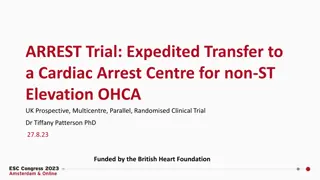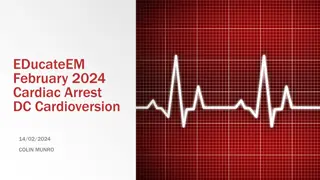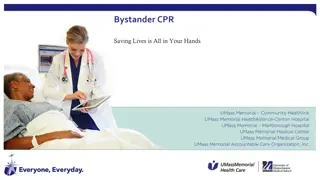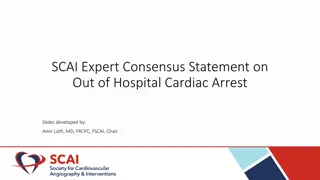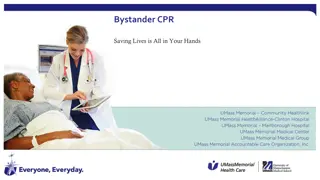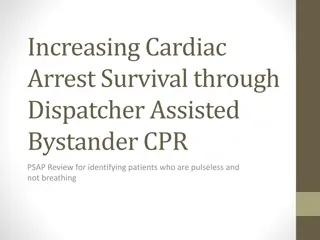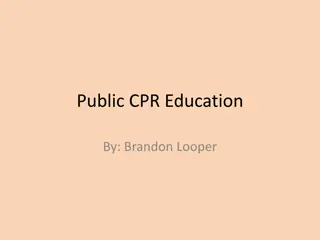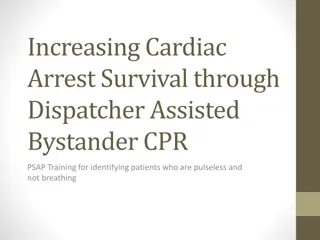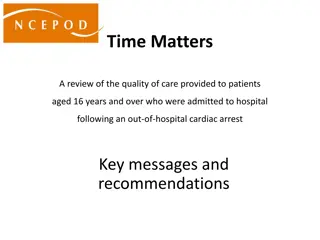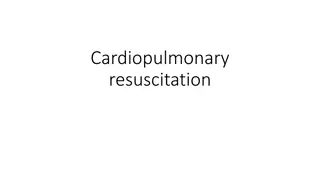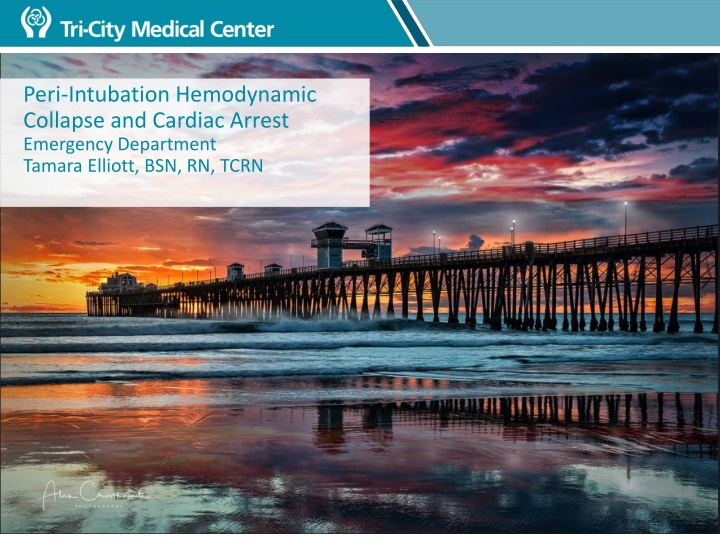
Managing Peri-Intubation Hemodynamic Collapse and Cardiac Arrest
Learn how to recognize and manage peri-intubation hemodynamic collapse and cardiac arrest effectively to improve patient outcomes. Understand risk factors, associated physiologic changes, and strategies to avoid cardiovascular collapse and arrest. Explore the use of Push-Dose Epinephrine for rapid hemodynamic support.
Download Presentation

Please find below an Image/Link to download the presentation.
The content on the website is provided AS IS for your information and personal use only. It may not be sold, licensed, or shared on other websites without obtaining consent from the author. If you encounter any issues during the download, it is possible that the publisher has removed the file from their server.
You are allowed to download the files provided on this website for personal or commercial use, subject to the condition that they are used lawfully. All files are the property of their respective owners.
The content on the website is provided AS IS for your information and personal use only. It may not be sold, licensed, or shared on other websites without obtaining consent from the author.
E N D
Presentation Transcript
Peri-Intubation Hemodynamic Collapse and Cardiac Arrest Emergency Department Tamara Elliott, BSN, RN, TCRN
Peri-Intubation Adverse Events 30% of intubations in ICU and ED associated with hypoxia, hypotension or full arrest Intubation with pre-existing hemodynamic compromise are at highest risk for collapse/arrest Failure to recognize high risk conditions contribute to peri-intubation adverse events Failure to plan and respond contribute to peri- intubation adverse events Downing et al, 2023 Yang et al, 2022
Risk Factors for Peri-Intubation Cardiac Arrest Low-normal to hypotensive BP values Shock index (SI = HR/SBP) >0.9 Cardiogenic pulmonary edema Elevated lactate Hypoxia Advanced age Downing et al, 2023 Yang et al, 2022
Associated Physiologic Changes Neuromuscular blockade: Suppression of sympathomimetic and respiratory drive Rapid transition from negative pressure ventilation to positive pressure Ventilator positive end expiratory pressure (PEEP) Oropharyngeal manipulation stimulates sympathetic and parasympathetic NS causing unpredictable hemodynamic response Yang, et al, 2022
How to Avoid Cardiovascular Collapse and Arrest Be prepared: Assess patient for risk factors associated with peri-intubation CV collapse/arrest Consider rapid fluid resuscitation prior to induction (caution with cardiogenic pulm. edema) Anticipate need for blood products Appropriate pre-oxygenation Anticipate pressors Downing et al, 2023 Yang et al, 2022
Push-Dose Epi Used for rapid hemodynamic support Epinephrine 1:10,000 diluted to 10 mcg/ml 5 20 mcg IV push typical dose range Currently no commercially produced product Must be prepared by med nurse or pharmacist Morley et al, 2023
Preparing Push-Dose Epi What you will need:
Preparing Push-Dose Epi How you will do it: Discard 1ml out of 10ml 0.9% NS flush syringe, retaining the remaining 9ml Draw 1ml of epinephrine 1:10,000 into the NS flush syringe to replace the discarded 1ml flush Cap and gently mix Label syringe sticker Epi 100 mcg/10ml = 10 mcg/ml Place label on syringe Morley et al, 2023
Words of Caution Practitioners may not pick up on presence of risk factors once the need to intubate is identified Consider soft BPs and shock index (SI) >0.9 high risk Advocate for fluid resuscitation prior to intubation Assess for presence of rales or coarse lung sounds if CXR has not yet been done
More Words of Caution Presence of pulmonary edema may reprioritize pressors over aggressive fluid resuscitation Push-dose epi can buy you time until continuous infusion pressor can be started Ketamine and propofol have been associated with higher number of cardiovascular collapse/arrest than etomidate as induction agent Downing et al, 2023
References References Downing, J., Yardi, I., Ren, C., Cardona, S., Zahid, M., Tang, K., Bzhilyanskaya, V., Patel, P., Pourmand,A., & Tran, Q. K. (2023). Prevalence of Peri-intubation major adverse events among critically ill patients: A systematic review and meta analysis. The American Journal of Emergency Medicine, 71, 200- 216. https://doi.org/10.1016/j.ajem.2023.06.046 Morley, H., Seabury, R., Parsels, K., Miller, C., Darko, W., Schrader, J., & Meola, G. (2023). Preparation/administration of push-dose versus continuous infusion epinephrine and phenylephrine: A simulation. The American Journal of Emergency Medicine, 74, 135- 139. https://doi.org/10.1016/j.ajem.2023.10.002 Yang, T., Chen, K., Gao, S., & Lin, C. (2022). Risk factors associated with Peri-intubation cardiac arrest in the emergency department. The American Journal of Emergency Medicine, 58, 229- 234. https://doi.org/10.1016/j.ajem.2022.06.013

